Discover 11 hidden attractions, cool sights, and unusual things to do in Rotherham (United Kingdom). Don't miss out on these must-see attractions: Clifton Park Museum, Roche Abbey, and Rotherham Town Hall. Also, be sure to include New York Stadium in your itinerary.
Below, you can find the list of the most amazing places you should visit in Rotherham (England).
Table of Contents
Clifton Park Museum
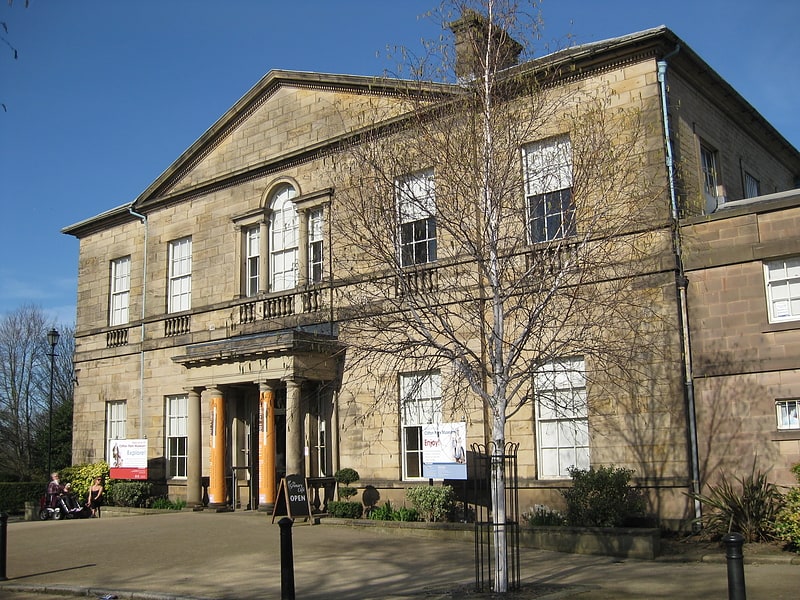
Museum in Rotherham, England. Clifton Park and Museum is a city park and municipal museum located in Clifton Park, Rotherham, South Yorkshire, England. Clifton Park Museum is located in Clifton House and is one of several publicly owned museums and visitor attractions administered by the Metropolitan Borough of Rotherham. The house is the headquarters of Heritage Services, which also includes the York and Lancaster Regimental Museum and Archives and Local Studies. It is a Grade II* listed building. Clifton Park is a visitor attraction with facilities including a skate park, rockery, memorial park and children's play areas. It is also Grade II listed with Historic England.[1]
Address: Clifton Lane, S65 2AA Rotherham
Roche Abbey

Abbey in Maltby, England. Roche Abbey is a now-ruined abbey in the civil parish of Maltby, Rotherham, South Yorkshire, England. It is in the valley of Maltby Dyke, known locally as Maltby Beck, and is administered by English Heritage. It is a scheduled monument and Grade II* listed in the National Register of Historic Parks and Gardens.[2]
Address: Maltby, Rotherham, Rotherham
Rotherham Town Hall
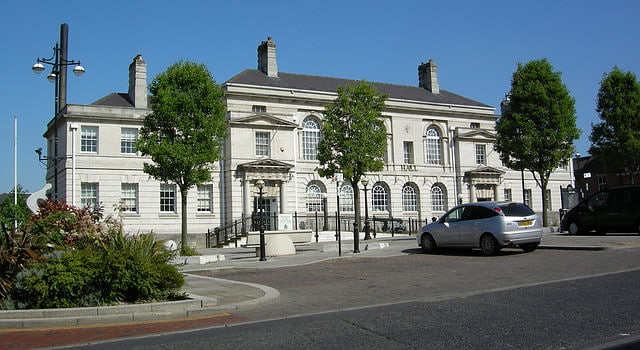
City or town hall in Rotherham, England. Rotherham Town Hall is a municipal building in The Crofts, off Moorgate Street in Rotherham, South Yorkshire, England.[3]
New York Stadium

Stadium in Rotherham, England. The New York Stadium is a football stadium in Rotherham, South Yorkshire, England. Opened in July 2012, it is the home ground of Rotherham United.[4]
Address: Don St, S60 1AH Rotherham
Wentworth Woodhouse
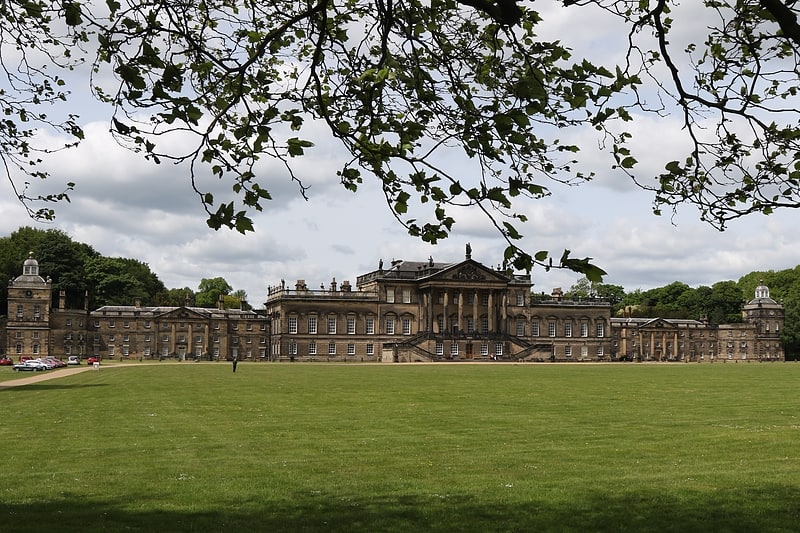
Building in England. Wentworth Woodhouse is a Grade I listed country house in the village of Wentworth, in the Metropolitan Borough of Rotherham in South Yorkshire, England. It is currently owned by the Wentworth Woodhouse Preservation Trust. The building has more than 300 rooms, although the precise number is unclear, with 250,000 square feet of floorspace. It covers an area of more than 2.5 acres, and is surrounded by a 180-acre park, and an estate of 15,000 acres.
The original Jacobean house was rebuilt by Thomas Watson-Wentworth, 1st Marquess of Rockingham (1693–1750), and vastly expanded by his son, the 2nd Marquess, who was twice Prime Minister, and who established Wentworth Woodhouse as a Whig centre of influence. In the 18th century, the house was inherited by the Earls Fitzwilliam who owned it until 1979, when it passed to the heirs of the 8th and 10th Earls, its value having appreciated from the large quantities of coal discovered on the estate.[5]
Catcliffe Glass Cone

The Catcliffe Glass Cone is a glass cone in the village of Catcliffe in South Yorkshire, England. It is the oldest surviving structure of its type in Western Europe, and it is a Grade I listed building and Scheduled Ancient Monument. Only three other glass cones survive in the United Kingdom; at Lemington, Wordsley and Alloa.
The glassworks cone was part of the Catcliffe glassworks, which was established in 1740 by William Fenney. Fenney had previously been the manager of the glassworks at Bolsterstone that was owned by his mother-in-law. The site at Catcliffe was chosen in part because the terms of her will prevented him from setting up a glassworks within 10 miles (16 km) of the works at Bolsterstone and Catcliffe is 10.5 miles (16.9 km) away. The glassworks closed c.1887, but was reopened briefly in 1900. The brick cone has archways around the base to allow maximum air entry. It is approximately 20 metres (66 ft) high.
Although glassmaking is an ancient process, it was carried out on a small scale until the development of industrialised methods in Europe allowed it to be mass-produced. The fusion of silica and sodium oxide in a furnace was usually achieved by the burning of wood; but coal was often used instead in Britain, which prompted the development of the glass cone. Glass cones consisted of a large central furnace, a flue to carry waste gas to the top of the structure and away, smaller furnaces around the walls to ensure the finished products stayed warm, and a circular platform on which workers stood while making their glassware. Although invented earlier, they became commonplace in the early 19th century; but further innovations in the glassmaking industry made the float glass production method more efficient and allowed manufacture to be based in fewer but larger works. Most cones were knocked down after they fell out of use, and by the mid-1970s only four survived: the Alloa cone (the only example in Scotland), Catcliffe Glass Cone, Lemington Glass Cone in Tyne and Wear, and Red House Cone in Wordsley, West Midlands.
In the First World War the site was used as a prisoner-of-war camp and, as a canteen during the 1926 United Kingdom general strike. The cone was threatened with demolition in the 1960s so the foundations of the other buildings that comprised the glassworks were excavated in 1962. In 1968 the cone received Grade I listing.
Access to the site was closed in 2006 as bricks were falling from the top of the structure. Restoration work was undertaken in 2014.[6]
Address: 1 Tristford Cl, S60 5JG Rotherham
Rotherham Minster
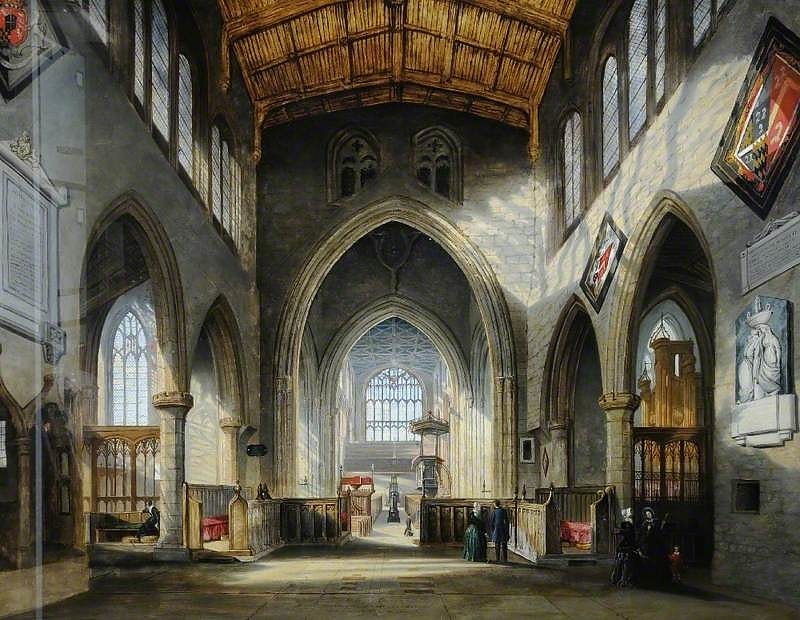
Christian church in Rotherham, England. The Minster Church of All Saints or Rotherham Minster is the Anglican minster church of Rotherham, South Yorkshire, England. The Minster is a prominent example of Perpendicular Gothic architecture and various architectural historians have rated it highly. Nikolaus Pevsner describes it as "one of the largest and stateliest churches in Yorkshire", Simon Jenkins states it is "the best work in the county", and Alec Clifton-Taylor calls it the "glory of Rotherham". With its tall spire, it is Rotherham's most predominant landmark, and amongst the tallest churches in Yorkshire. The church has been designated as Grade I listed since 1951 by Historic England and was granted Minster status in 2004. The minster is also one of two parish churches to have minster status in South Yorkshire, the other being Doncaster Minster.[7]
Address: Church Street, S60 1PD Rotherham
Hoober Observatory

Astronomical observatory. J A Jones Hoober Observatory is a privately owned observatory located in South Yorkshire, England near to the villages of Hoober and Wentworth, 4 miles North-northwest of Rotherham. It can be found about 300 metres east of Hoober Stand. The observatory is owned and operated by Mexborough & Swinton Astronomical Society.[8]
Rotherham Bridge

Bridge. Rotherham Bridge crosses the River Don in central Rotherham, South Yorkshire. It is known for its bridge chapel, considered the best preserved in England.
A document of 1385 refers to Bridgegate in the town, which implies that a previous bridge existed on the same site. The road it carries was originally the main route from London to Richmond. The current bridge was erected by 1483, when the Chapel of Our Lady of Rotherham Bridge was added. It is of ashlar sandstone and is built on three piers, each with a cutwater.
John Leland, writing around 1540, described a "fair Stone Bridge of iiii arches" and "a Chapel of Stone well wrought". The chapel was dissolved in 1547 and converted into first an almshouse, then the town gaol and finally a shop. The bridge was altered in 1768–69 by John Platt, working for John Carr of York, but was restored to its original dimensions by Reginald Blomfield in 1927, when Chantry Bridge was built alongside. The chapel was restored at the same time.
The bridge is Grade I listed and is a Scheduled Ancient Monument.[9]
South Yorkshire Transport Museum
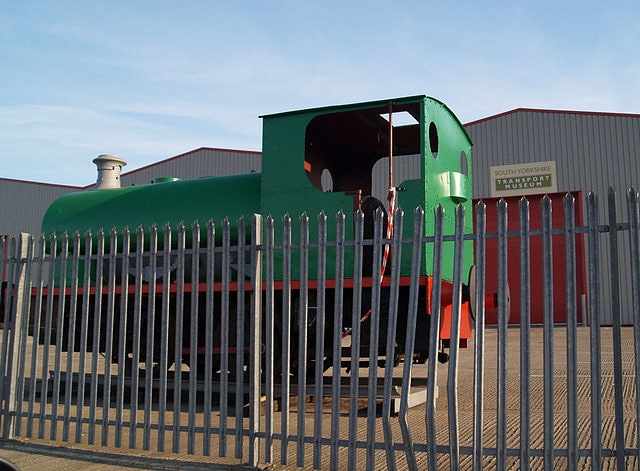
Museum in Rotherham, England. The South Yorkshire Transport Museum is a transport museum of South Yorkshire and surrounding areas in the United Kingdom. It was formerly known as the Sheffield Bus Museum
Founded in the 1960, STYM is located in Aldwarke in Rotherham.
STYM also features buses, the lower deck of a Sheffield Tramway tramcar, a tractor, a lorry, milk floats and an extensive array of bicycles plus static displays of models and memorabilia.[10]
Address: Unit 9 Waddington Way, S65 3SH Rotherham
Hoober Stand

Tower in Brampton Bierlow, England. Hoober Stand is a 30-metre-high tower and Grade II* listed building on a ridge in Wentworth, South Yorkshire in northern England. It was designed by Henry Flitcroft for the Whig aristocrat Thomas Watson-Wentworth, Earl of Malton to commemorate the quashing of the 1745 Jacobite rebellion. It lies close to his country seat Wentworth Woodhouse. Its site is approximately 157 metres above sea level and from the top there are long-distance views on a clear day. It is open to the public 2–5 pm on Sundays and bank holiday Mondays from the spring bank holiday weekend until the last Sunday in September. Hoober Stand is one of several follies in and around Wentworth Woodhouse park; the others include Needle's Eye and Keppel's Column. Sidney Oldall Addy, the Sheffield author calls the structure Woburn Stand in his 1888 book, A glossary of words used in the neighbourhood of Sheffield.[11]